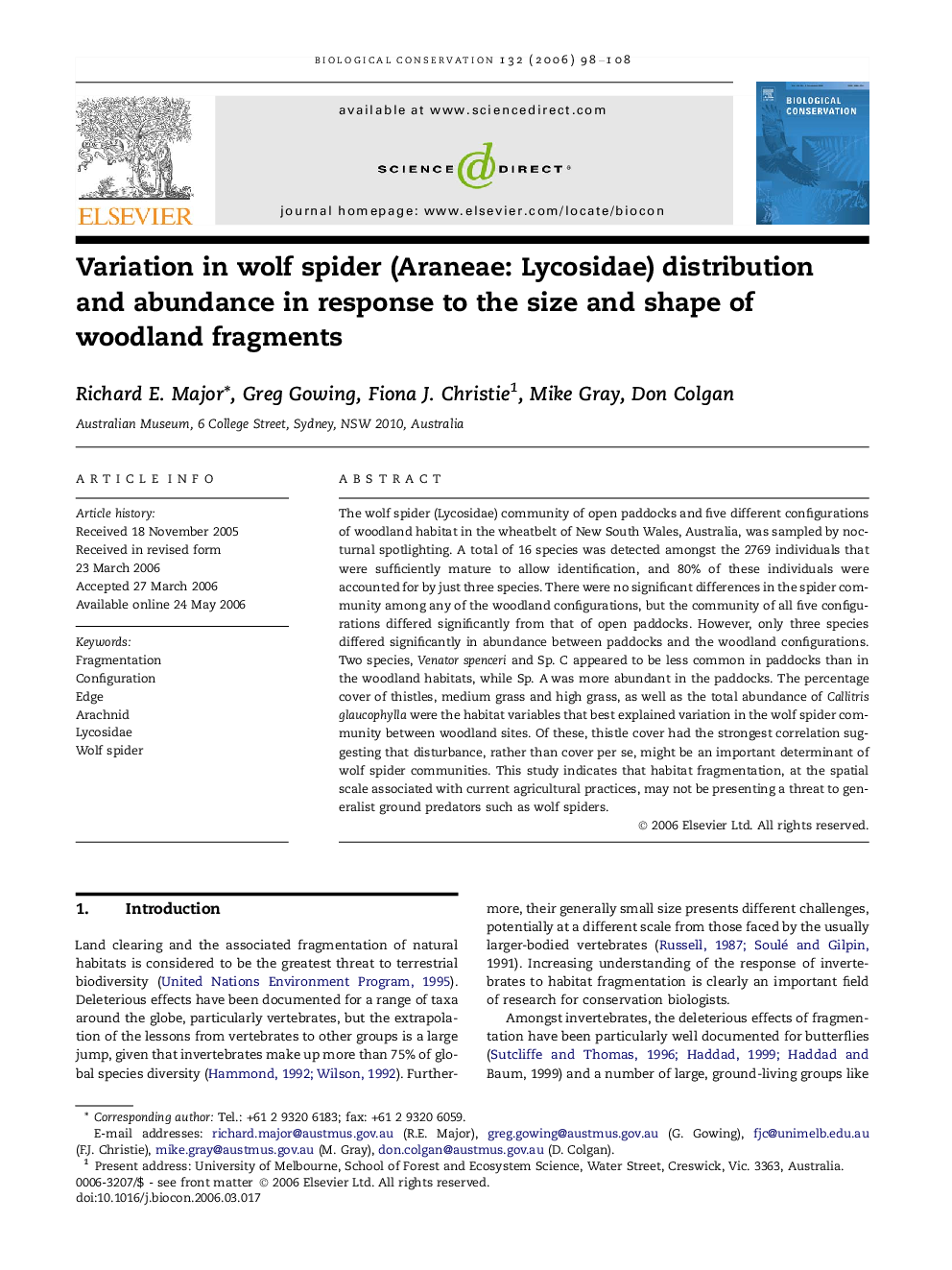| Article ID | Journal | Published Year | Pages | File Type |
|---|---|---|---|---|
| 4387654 | Biological Conservation | 2006 | 11 Pages |
The wolf spider (Lycosidae) community of open paddocks and five different configurations of woodland habitat in the wheatbelt of New South Wales, Australia, was sampled by nocturnal spotlighting. A total of 16 species was detected amongst the 2769 individuals that were sufficiently mature to allow identification, and 80% of these individuals were accounted for by just three species. There were no significant differences in the spider community among any of the woodland configurations, but the community of all five configurations differed significantly from that of open paddocks. However, only three species differed significantly in abundance between paddocks and the woodland configurations. Two species, Venator spenceri and Sp. C appeared to be less common in paddocks than in the woodland habitats, while Sp. A was more abundant in the paddocks. The percentage cover of thistles, medium grass and high grass, as well as the total abundance of Callitris glaucophylla were the habitat variables that best explained variation in the wolf spider community between woodland sites. Of these, thistle cover had the strongest correlation suggesting that disturbance, rather than cover per se, might be an important determinant of wolf spider communities. This study indicates that habitat fragmentation, at the spatial scale associated with current agricultural practices, may not be presenting a threat to generalist ground predators such as wolf spiders.
